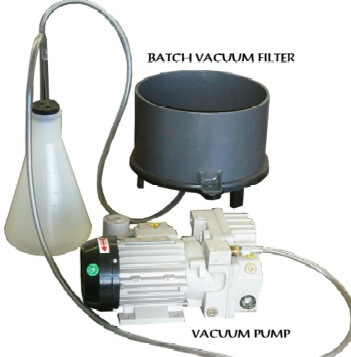 The first rule of sampling technique is the sample must be REPRESENTATIVE. What this means is that the sample must be a true indication of the content of material being sampled. To accomplish the most basics of all slurry sampling method, this the operator has a few guidelines to follow.
The first rule of sampling technique is the sample must be REPRESENTATIVE. What this means is that the sample must be a true indication of the content of material being sampled. To accomplish the most basics of all slurry sampling method, this the operator has a few guidelines to follow.
First, you need get a good or the correctly sized sample cutter and when cutting the sample, the entire flow must be cut. To explain, whenever slurry is pumped through a pipe, discharged from a mill, flows down a launderer, or is floated over a cell lip, graduation and separation takes place. Size and the specific gravity of the material will dictate where in the flow, the mineral will be. A sample is supposed to represent the ENTIRE flow. If the sample is cut from one spot only, chances are it will not be a true sample.
Is the sample that is being taken, a representation of production over a period of time, like a shift sample? If it is, then for the sample to be accurate it must be made up of many smaller samples. These are cut at regular intervals throughout the shift. The more there are, the higher the accuracy rate.
With accuracy in mind, CLEANLINESS is next to godliness. As an operator, you may be preparing the samples for assaying. In this case you will be dealing with material that is to be measured in the parts per thousands. With precious minerals, the measurement may be parts per million. It doesn’t take many parts that are accidently added, to spoil a sample. This means clean sample preparation tools, clean hands, and excess dust and dirt knocked off of clothes before preparing the samples.
The term that is used to describe this type of spoilage is a CONTAMINATED sample. To help prevent contamination the order that the samples are prepared in is important. You always handle the sample that has the least mineral in it first. That would he your final tail sample. The chances of contaminating the first sample that you handle is a lot less than it is on the last sample. Because of the amount of mineral that is in the tail sample it would be very hard to transfer enough to make any appreciative difference in, say, a concentrate sample. As an example let’s look at three different assays, one for each type, heads, tails, and conc. This will be for a copper circuit.
- Heads= 0.50%
- Tails= 0.04%
- Conc= 29%
These figures mean that the feed to the circuit has one half of one percent copper in the ore.
95% will be material other than copper. Of the plant feed (0.5% Copper) only 42 parts per thousand weren’t collected and were sent to final tails. So you can see that if you handled the concentrate, which is better than 29% copper, then handled the tails, it wouldn’t take much concentrate to change the tail assay.
What is required in sample preparation will vary from mine to mine. As the equipment and the processes vary different procedures will he followed. 
Generally however there is still a few basic things that should be done. If the reason that the sample was taken was to determine its moisture content, then a portion of the sample will he weighed, normally 1000 grams. The sample will then he dried and weighed again. Prom the difference in the weight, the percentage of water that was in the sample can be determined.
In the majority of the samples taken, the amount of water in the sample will not be a factor. In these cases the excess water will be removed before final drying. This will be done by either a pressure or a vacuum pot. These two items are almost the same. The difference is that in one a vacuum is applied to the bottom of it to suck the water out of the sample. In the other, the pot is pressurized with air. This will force the water out. In some mills the sample pot will be attached to an automatic sampler, these will have to be monitored during a shift to ensure that they are working at all times.
If you are working with a manual type filter pot, there are a few precautions to take with your sample.
Cleanliness as I have said is very important. So is ensuring that all of the sample is prepared. Filtering just a portion of the wet sample is not very good technique. Remember the assays are often reported in percentages. This means that if there was any settling or classification when the sample was cut, just a portion of the sample may not be representative. Once the sample has been dried it can be thoroughly mixed and then have a true representative portion removed.
One of the reasons for sampling is to determine the different size classifications of the ground material. This makes it very important for the sample to be representative.
The relationship between the size classification and the percentage of recovery can be critical.
When the sample is put into an oven, care should be taken not to overheat the sample. Heat is one cause of OXIDIZATION. With some ore, this oxidization will change the assay results.
I cannot stress the importance of maintaining accurate sampling preparation techniques. To try and operate a concentrator plant without this information would be like doing surgery blindfolded. All you can really do is make a stab at it and pray.
